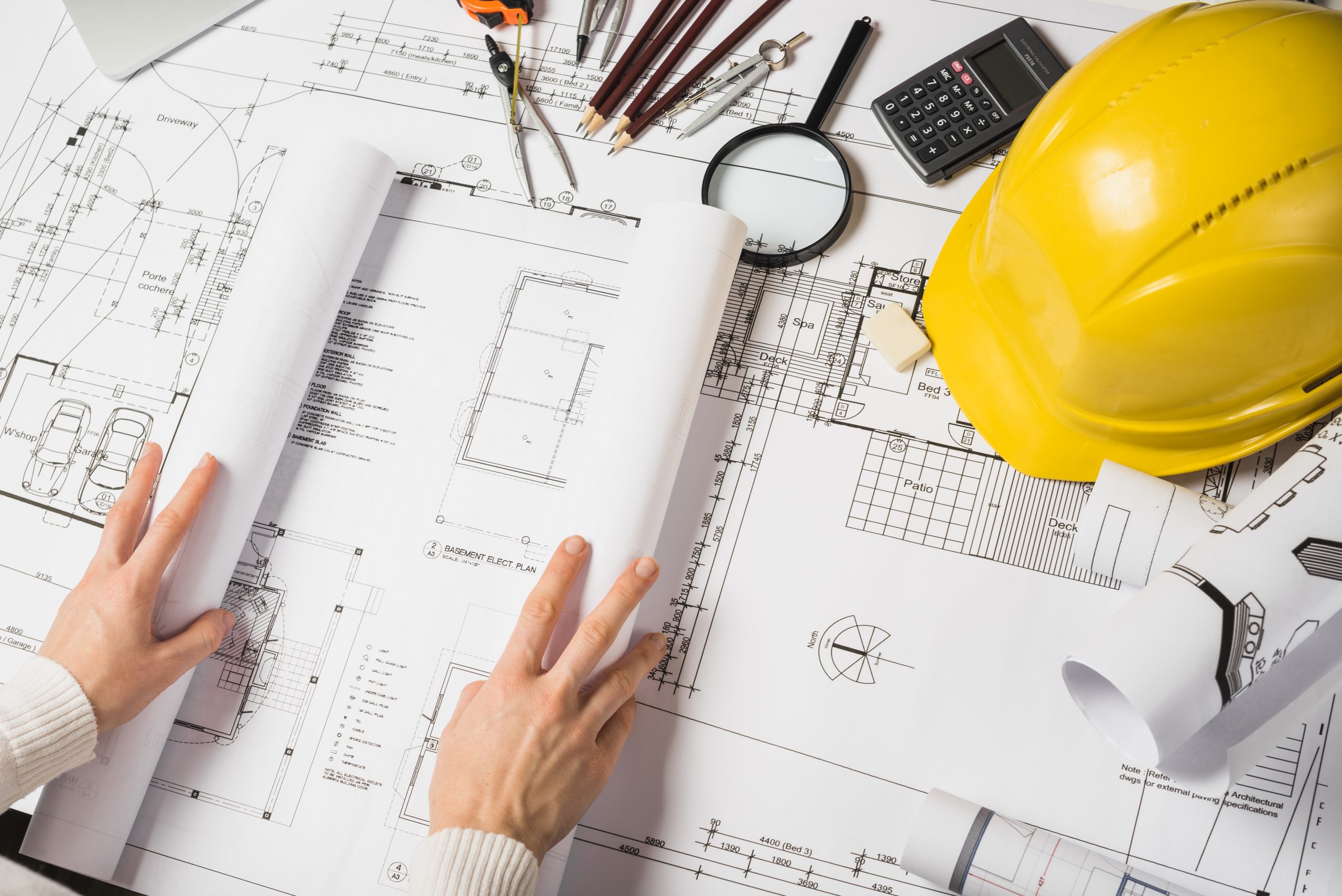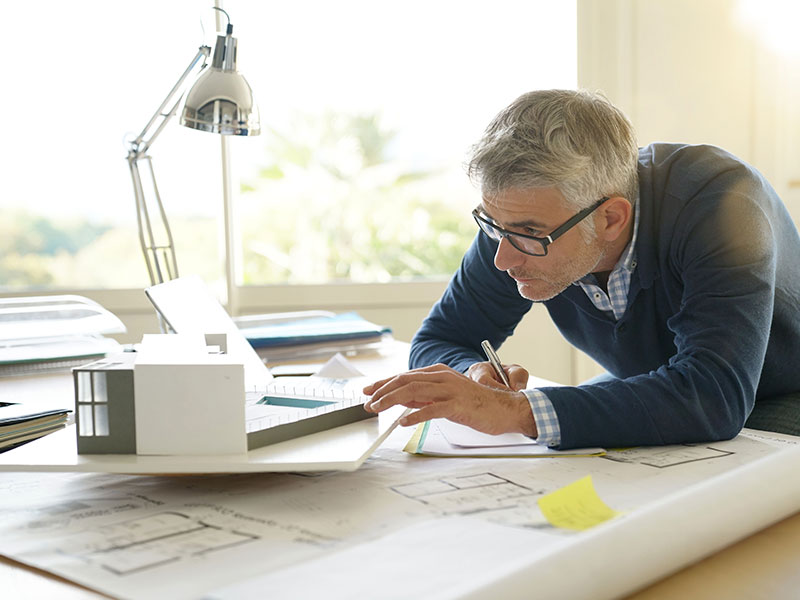Architect Interview Questions You Should Be Ready to Answer
Architect Interview Questions You Should Be Ready to Answer
Blog Article
Understanding the Diverse Career Paths Available for Aspiring Architect
As a hopeful Architect, you have a world of occupation courses waiting on you. Each course provides one-of-a-kind challenges and chances to use your creative thinking and technical knowledge. Whether you're drawn to traditional design or the nuances of sustainable style, there's a specific niche that lines up with your interests. Comprehending these varied choices can shape your specialist journey, but which direction will you choose to check out first?
Typical Architecture: Designing Frameworks and structures
Conventional style focuses on making structures and structures that mix capability with visual charm. Your styles can mirror cultural heritage, showcasing local customs while meeting modern requirements.
You'll develop skills in drafting, model-making, and site analysis, enabling you to picture and interact your concepts effectively. Engaging with customers, you'll need to comprehend their vision and convert it right into feasible styles.
Moreover, developing codes and sustainability techniques are necessary in your job, guaranteeing your frameworks are risk-free and eco-friendly. As you grow in your career, you'll find possibilities in domestic, business, and even repair projects, each offering special difficulties. Welcoming traditional design leads the way for a fulfilling profession that admires the past while forming the future.
Urban Planning: Shaping Neighborhoods and Public Spaces
As a hopeful Architect, you can play a vital duty as a city coordinator, changing just how neighborhoods function and interact. By using area interaction techniques, you'll guarantee that locals have a voice fit their setting. And also, integrating sustainable design concepts will certainly aid create areas that not just fulfill today's needs but also secure the future.
Role of Urban Planners
While lots of might assume of designers as the single dreamers behind structures, urban coordinators play an essential role in forming the broader landscape of areas and public spaces. By teaming up with numerous stakeholders, you'll assist design parks, transport systems, and residential areas that promote social interaction and access. Your knowledge in spatial style and community characteristics allows you to visualize future development while maintaining social heritage.
Neighborhood Involvement Strategies
Effective community interaction approaches are essential for city organizers to guarantee that the voices of homeowners are heard and valued in the planning process. To promote meaningful discussion, you need to prioritize open discussion forums and workshops where community members can share their ideas and concerns. By proactively integrating and paying attention feedback, you'll create areas that reflect the area's needs, eventually leading to even more successful and lasting urban environments.
Sustainable Layout Principles
When designing metropolitan areas, integrating lasting layout principles is vital for creating settings that grow both ecologically and socially. Take into consideration incorporating environment-friendly rooms, like parks and yards, to improve biodiversity and enhance air top quality.
Creating with water preservation in mind is additionally essential-- think about rainfall gardens and absorptive surfaces to take care of stormwater. Involving neighborhood members throughout the preparation procedure assurances that the areas you produce meet their requirements and urge social interaction. By welcoming these concepts, you'll contribute to vibrant, sustainable urban landscapes that profit everyone.

Landscape Design: Creating Lasting Outside Atmospheres
As you check out landscape design, you'll discover essential layout concepts that develop stunning and practical outdoor rooms. Lasting practices play a vital function in making sure these settings prosper while reducing ecological effect. And also, you'll discover a variety of job chances that permit you to make a genuine difference in exactly how individuals communicate with nature.
Layout Principles in Landscape
Recognizing style principles in landscape design is essential for developing lasting outdoor environments that harmonize with nature. You'll require to contemplate aspects like proportion, balance, and range to assure your layouts really feel cohesive and inviting. Integrating indigenous plants not only boosts biodiversity however likewise lowers water use, making your landscape durable. Consider the circulation of room and how people engage with it; pathways and seating locations should invite exploration and leisure. Furthermore, take note of seasonal modifications, creating with products that enhance the environments year-round (Architect). By focusing on sustainability and aesthetics, you can create outside areas that enhance the community and advertise wellness. Welcoming these concepts will certainly establish a strong foundation for your occupation in landscape style.
Sustainable Practices Summary
Sustainable methods in landscape architecture not only focus on aesthetic appeals however likewise prioritize ecological health and wellness and resource conservation. By integrating native plants, you improve biodiversity and decrease the need for chemical fertilizers and pesticides. Implementing reliable watering systems helps preserve water and decreases overflow, securing neighboring communities. You can make spaces that advertise dirt health, such as making use of organic materials and exercising permaculture principles. Furthermore, integrating green framework, like rain gardens and porous sidewalks, aids in stormwater monitoring and decreases city heat. When you develop exterior atmospheres with sustainability in mind, you add to a healthier planet and provide areas that cultivate community link. Eventually, these techniques guarantee your layouts benefit both individuals and the setting for years to find.
Job Opportunities Exploration
With a strong foundation in sustainable methods, landscape design uses a range of occupation courses that enable you to make a purposeful effect on the atmosphere. You could work as a landscape designer, developing cosmetically pleasing and useful exterior rooms, or concentrate on ecological reconstruction, aiding to revitalize broken ecosystems. Urban planners usually collaborate with landscape architects to develop environment-friendly rooms in city settings, enhancing city livability. If you're passionate concerning education and learning, consider becoming a landscape architecture teacher, check my reference inspiring future generations. Additionally, you might function with nonprofits concentrated on environmental sustainability or engage in study to introduce new practices. Each path not only forms beautiful settings however additionally cultivates a much healthier planet for future generations.
Sustainable Layout: Concentrating On Eco-Friendly Practices
As you discover your profession in architecture, welcoming environment-friendly practices can set you apart in an affordable field. Lasting style focuses on producing structures that reduce environmental effect while boosting resident wellness. By incorporating eco-friendly materials, energy-efficient systems, and lasting structure techniques, you'll add to a greener future.
Beginning by getting knowledge of eco-friendly qualifications like LEED or BREEAM, which can reinforce your qualifications. Take into consideration exactly how all-natural light, air flow, and thermal efficiency can enhance style. Team up with engineers and ecological specialists to innovate options that reduce waste and save resources.
Do not fail to remember the significance of area participation-- appealing regional stakeholders can influence designs that balance with the environment. As clients significantly focus on sustainability, your knowledge in eco-friendly techniques will not just attract jobs yet additionally satisfy your interest for liable style. Welcome this important facet of the profession, and view your career prosper.
Historical Conservation: Shielding and Recovering Social Heritage
While you begin on your building trip, take into consideration the vital function of historic preservation in keeping our social heritage. This area focuses on the defense and reconstruction of considerable buildings, sites, and structures that inform the tales of our past. By taking part in historic preservation, you'll help safeguard the building tradition that shapes community identification.
As a historic conservation Architect, you'll examine historical significance and analyze the condition of frameworks. You'll work closely with chroniclers and conservationists to guarantee genuine restoration strategies are employed. This career course allows you to mix creativity with research study, enabling you to make services that respect original products and craftsmanship.
Your work not just adds to sustainability by recycling existing buildings however also promotes a sense of pride within areas. Accepting this course will aid you end up being a guardian of background, preserving the tales and appearances that enhance our lives.
Inside Design: Enhancing Indoor Spaces
Historical preservation and interior style both share a commitment to enhancing the built atmosphere, yet they concentrate on different elements. While historical conservation stresses preserving a framework's social and historic value, interior design absolutely nos in on optimizing indoor rooms for capability and appearances.
As an aspiring Architect, you'll discover that indoor architecture allows you to blend imagination with technological skills. You'll design spaces that not only look great however likewise advertise convenience and performance. This area involves understanding how light, color, and materials communicate within an area, impacting mood and functionality.
You'll service different tasks, from household homes to business workplaces, making certain that each setting fulfills the needs of its occupants. By prioritizing customer experience, you can change insides into functional and inspiring rooms, making a significant impact on how people interact with their environments. Welcome the chance to improve indoor atmospheres and shape the investigate this site means individuals live and work.
Industrial Layout: Combining Capability With Aesthetics
Commercial style plays a vital role in producing items that seamlessly mix appearances with performance, making certain that what you use day-to-day is not only visually attractive but additionally functional. As a hopeful Architect, you might immerse on your own in this field, concentrating on creating whatever from furnishings to consumer electronic devices. Your job involves recognizing individual requirements, products, and making processes, allowing you to create cutting-edge options that boost day-to-day experiences.
In commercial design, you'll often collaborate with producers, engineers, and online marketers, making sure that your styles are not just lovely however likewise viable. This career read more course supplies a vibrant environment where creativity fulfills functionality, making it a gratifying choice for architects interested in forming the products of tomorrow.
Frequently Asked Concerns
What Educational Accreditations Do I Need to Become an Engineer?
To end up being an architect, you'll require a professional level in design, generally a Bachelor's or Master's. Additionally, you'll need to complete an internship and pass the Architect Enrollment Evaluation to exercise lawfully.
Are There Accreditation Needs for Different Building Profession Paths?
Yes, there're certification demands for various architectural courses. Architect. You'll need to pass tests, complete teaching fellowships, and in some cases seek specialized training, relying on your selected emphasis, like landscape architecture, city design, or historical preservation
What Software Program Abilities Are Vital for Engineers Today?

Exactly How Can I Gain Practical Experience While Examining Design?
You can acquire sensible experience by interning at architectural companies, getting involved in design competitions, offering for community tasks, or working together with schoolmates on real-world assignments. These chances boost your skills and construct useful links in the market.
What Work Opportunities Exist Outside Typical Design Firms?
You can discover different work opportunities outside standard architecture firms, like city planning, indoor layout, landscape architecture, building and construction management, genuine estate development, or perhaps duties in sustainability consulting. Each deals distinct obstacles and incentives.
Whether you're drawn to typical architecture or the subtleties of lasting design, there's a particular niche that aligns with your rate of interests.When designing urban areas, including lasting design principles is critical for producing atmospheres that prosper both environmentally and socially.As you explore landscape architecture, you'll find crucial design principles that produce functional and gorgeous outside areas.Recognizing layout concepts in landscape style is essential for creating sustainable outdoor atmospheres that balance with nature.In industrial style, you'll typically work together with online marketers, engineers, and manufacturers, making sure that your styles are not only beautiful but additionally possible.
Report this page